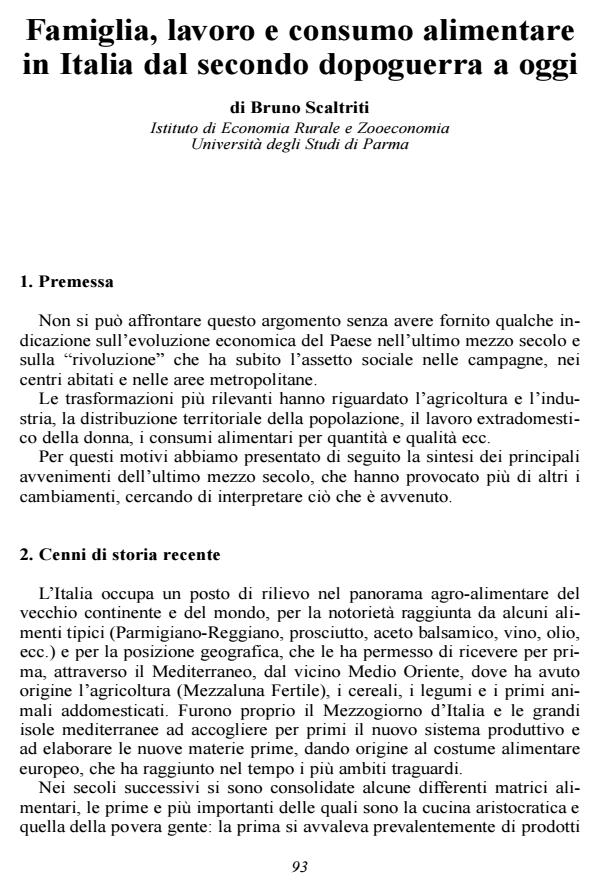Famiglia, lavoro e consumo alimentare in Italia dal secondo dopoguerra a oggi
Titolo Rivista ECONOMIA AGRO-ALIMENTARE
Autori/Curatori Bruno Scaltriti
Anno di pubblicazione 2004 Fascicolo 2001/2
Lingua Italiano Numero pagine 24 P. Dimensione file 77 KB
DOI
Il DOI è il codice a barre della proprietà intellettuale: per saperne di più
clicca qui
Qui sotto puoi vedere in anteprima la prima pagina di questo articolo.
Se questo articolo ti interessa, lo puoi acquistare (e scaricare in formato pdf) seguendo le facili indicazioni per acquistare il download credit. Acquista Download Credits per scaricare questo Articolo in formato PDF

FrancoAngeli è membro della Publishers International Linking Association, Inc (PILA)associazione indipendente e non profit per facilitare (attraverso i servizi tecnologici implementati da CrossRef.org) l’accesso degli studiosi ai contenuti digitali nelle pubblicazioni professionali e scientifiche
1957 is generally considered the year of the Italian economic miracle. During this period, Italy passed from underdevelopment to development thanks to a boom in the manufacturing industry. Agriculture also developed with the introduction of mechanisation and subsidies aiding the small farmstead. Markets opened up thanks to better communications but also thanks to the creation of the European Economic Community. This introduced radical changes in the habits and life-style of the Italian family who started looking beyond the confines of its nucleus to satisfy its needs for food. The market for fresh and processed foods, also due to internationalisation, passed from a static to a dynamic one, and a clash emerged between two different production and consumption models. The first was linked to the temperate and surplus areas of Central-Northern Europe, while the second was associated with the hot, arid non-surplus areas of the Mediterranean. The first is characterised by large-scale organisations with share capital whose scope is to gain the maximum return on investments through profit. These companies produce the so-called mass-market foodstuffs with value-added service and market-oriented approach. The second model, by contrast, is made up of small or very small firms financed with family capital that base production continuity on quality. The typical speciality products, linked to tradition or a particular region, characterise this productive model. Other types of products have recently appeared alongside the other two clashing parties in the market place: so-called health foods that have a curative and nutritional role, foodstuffs produced in the third world and distributed as part of a solidarity initiative, and produce from organic nurseries, which responds to the growing demand from consumers for wholesome and natural produce. The battle concerning GMO is currently wide open and represents the latest invention of the multinationals to increment their share of Mediterranean and global markets.
Bruno Scaltriti, Famiglia, lavoro e consumo alimentare in Italia dal secondo dopoguerra a oggi in "ECONOMIA AGRO-ALIMENTARE" 2/2001, pp , DOI: